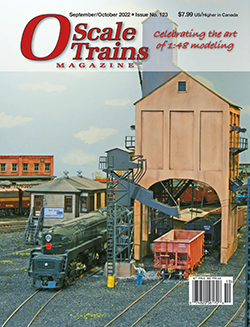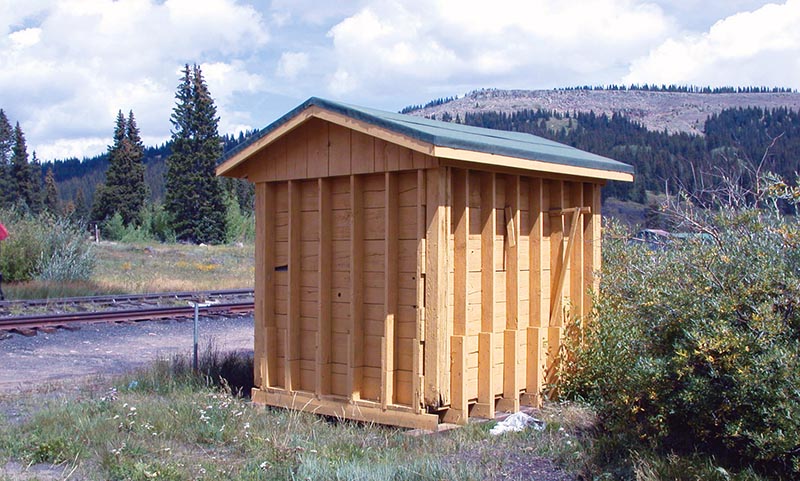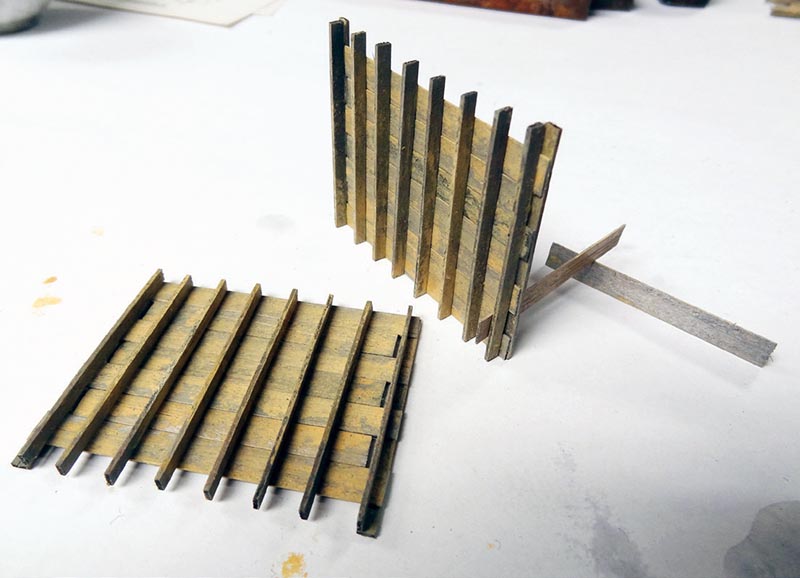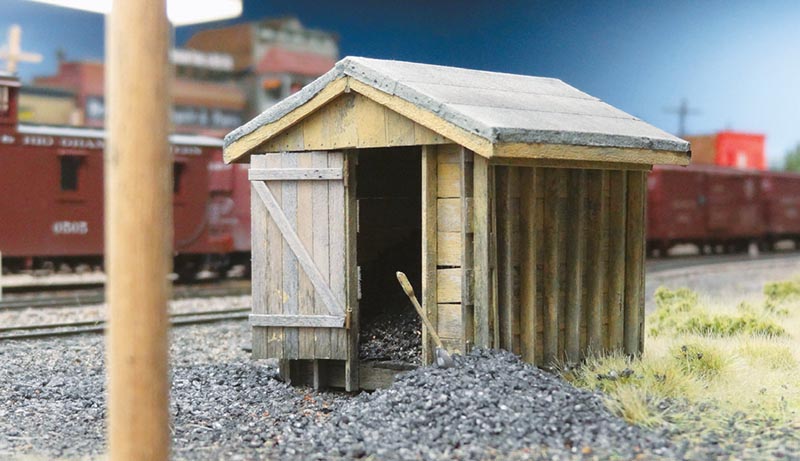 By Lex Parker/photos by the author
By Lex Parker/photos by the author
As previously mentioned, I have visited Durango, Colo., and Chama, N.M., several times as part of my interest in the Denver & Rio Grande Western narrow gauge railroad. I decided to model Chama in the mid-1930s. Chama is like a place in a time warp, almost unchanged since the ’30s, all steam power, quaint yards, and a peaceful little community. Getting around the yards that have no fences is a blessing these days, but a courteous acknowledgment at the depot that you are out there is appreciated. One must still observe all the safety issues and respect the equipment. There is so much information to observe and capture that I have built up a significant photographic inventory of equipment and structures as reference.
While on these jaunts at Cumbres & Toltec Scenic Railroad, around the yards, as well as stops at Cumbres and Antonito, I observed the interesting small structures that housed coal. Not enough was stored for locomotives, but as a convenient source for stoves for cooking and heating in bunk houses and cabooses as well as for coaches and depots, and enough to keep the chill off on wintry nights. The structure can easily be used in any railroad in days of steam.

What I found curious at first was that the stud framing was on the outside. After noting the coal inside, I came to the realization that it was a simple way to keep the walls intact. Shoveling coal into or out would press against the walls; if the studs were inside, the board siding would soon be smashed out. Also, note that the structure sat on its own joists that secured it and kept the floorboards off the damp ground. These structures could be built off site and delivered anywhere needed.
I lightly scribed the stripwood with a file card for grain and then rubbed all the wood with 0000 steel wool to remove any raised fibers. Then I stained the wood with a mix of rubbing alcohol and black shoe dye. Yellow is a standard color for D&RGW; I like to use Floquil, but it’s your choice. There are several ways to apply weathering. In this case I lightly dabbed the wood with rubber cement and then applied mixed tones of paint over it, but only on the exterior side. Finally, I draw the sticky side of masking tape across the surface, lifting off the paint and rubber cement. Now I chop all stripwood to size. Here’s an example of the weathered wood.

Using the templates, I stacked all the wood siding together, then tacked two studs in place to hold it all together. The rest of the studs were then glued in place. Note that the shorter boards have a gap the thickness of a board…


